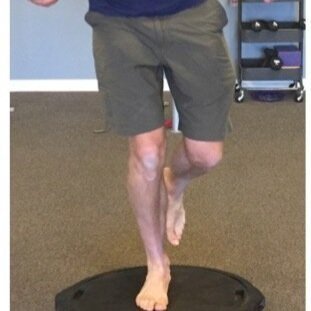Ankle sprains are one of the most common injuries in the lower quarter affecting with an estimated 2 million cases occurring each year in the U.S. Manual therapy and exercise remain the gold standard of care for these injuries due to their ability to accelerate a patient’s recovery from the injury compared to usual care or R.I.C.E. The vast majority of cases heal and return to prior levels of activity, but a small fraction of patients develop chronic symptoms and recurrent sprains in their ankle. Previously we thought these recurrent injuries may be due to an increase in ligament laxity due to the sprains, but newer research has not found an increase in ligament laxity in chronic compared to resolved ankle sprains. Conversely, researchers have found significant differences and ankle balance and proprioception among these chronic cases indicating a change in the nervous system is likely behind these chronic symptoms and recurrent sprains.
Menacho and colleagues reviewed the available evidence on the reaction time of the outer leg muscles during a sudden ankle movement task (J Electromyogr Kinesiol. 2010). 25 articles were reviewed on the ability of the peroneal muscles of the legs to stabilize the ankle after a sudden inversion, toe inward, ankle motion. As expected authors consistently found a slower reaction time among patients with chronic ankle pain and recurrent sprains. These individuals were slower to correct the positional fault of the foot and ankle compared to their healthy peers. During walking or sports a slower reaction time can be the difference between a stumble and another sprain. Individuals are advised to work with a local Physical Therapist to determine their balance impairments and prescriptive treatments.
Click Here to schedule your next session with the experts at MEND

